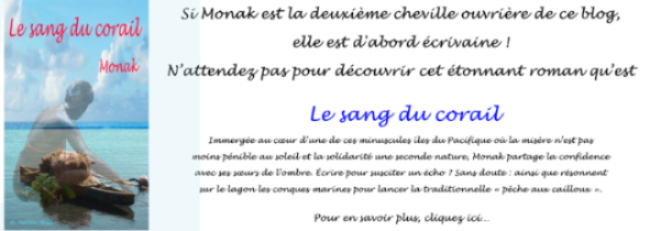Beyond all controversy on evangelization and
colonization, we can only pay a tribute to the architectural work of the Lay
Brother Gilbert Soulié in the Gambier.
If the work and life of this
obscure religious of the Congregation of the Sacred Hearts (Brothers of Picpus)
are well known today, we owe it to Jean-Paul Delbos and his book “La Mission du bout du monde” (The mission of end of the world),
published by Les Editions de Tahiti.
 |
| Jean-Paul Delbos’ book |
This
book is, in reality, nothing but the transcription of Brother Soulié’s notebooks.
The inadequate writing levels of the author of the note-books entailed a
tremendous effort from the transcriber.
That
said, these books are a goldmine for anyone interested by the Gambier Archipelago
and its fabulous architectural heritage.
Brother
Soulié, the builder of end of the world
Arrived on Mangareva in
1836, the Lay Brother Gilbert Soulié immediately set to work to rebuilding, with
permanent materials, for this time, St Raphaël Church at Aukena. He will never
cease to build until his death in 1863!
 |
| St Raphaël of Aukena, the first hard-standing church in The Gambier |
The Gambier archipelago is
deeply stamped with the seal of this self-taught of genius. The list of
buildings, erected by this man of unusual tenacity and inventiveness, is too
long to establish: from Saint-Raphaël little Church of Aukena, the cathedral,
the watchtowers, to Aukena College Re’e and many others too.
If Lay Brother Gilbert
Soulié doesn’t conceive generally the plans of all these edifices, he takes
charge indeed of seeking and finding all technical solutions to problems; and
there are many problems.
 |
| A spiral staircase carved in basalt |
It was incumbent upon him to
recruit, train and manage the Mangarevans so that they are able to construct these
monuments we are seeing today.
Forgotten by official history
in favor of Fathers Laval and Liausu, memory and work of this extraordinary man
were happily rehabilitated by Jean-Paul Delbos.
Brother Soulié’s
technical challenges
The first challenge for
Gilbert Soulié is the one about the tools and materials.
In the heart of the South Pacific,
in the first half of the nineteenth century, do not rely on external supplies. Local
materials can be used only.
For wood, it just exploits native
species and adjusts to their technical specifications. In contrast, here, no
metal, no brick, no cement, no lime… There are no materials well known by
Brother Soulié in the Gambier.
Never mind: the Brother
builder will look for and find solutions… before their implementation.
 |
| The furnace for cooking coral |
The carcass, like the old
Mangarevans do, is carved in the basalt. All the stones of the marae, destroyed by order of Father
Laval, will be even used. The real problem concerns the cement, lime and
plaster.
That’s when Brother Soulié
will demonstrate his whole engineering. It will treat the “coral soup” to
replace the missing materials.
To achieve his own ends, he
build a furnace in which the “coral soup” is “cooked”. This provides a material
which replaces lime. It is a “titanic workload”*,
but the labor is free and “at the beck and call”* of their masters.
The problem of roofing is solved
by a compromise: it raises timber works as he has always seen, but by making
the connections with plant ties, like for all traditional local buildings. Then
he realizes the covers by following Mangarevan method: using pandanus leaves or niau (very common trees in all the Polynesian islands).
The Lay Brother
Gilbert Soulié’s works
Unlike his superior Laval,
it seems that Brother Soulié has established effective relationships with the Mangarevans.
This is probably why his notebooks, while revealing all his construction
secrets, teach us much more about the people of the time than Father Laval’s
writings.
St. Michel Cathedral
of Rikitea
To avoid returning to old
practices, it is built on the site of the ancient idols temple, are tapere, by using the own stones of
the same marae.
.
 |
| The porch of St. Michel before restoration… |
This imposing building of 48
by 18 meters has been only provided with its two bell-towers quite later so as to
give it a resemblance with Notre-Dame-de-Paris.
Its remarkable altar of
precious wood with inlaid mother-of-pearl is entirely Brother Gilbert Soulié’s
work.
In a state of disrepair, St. Michel Cathedral of Rikitea had to be closed to the public a few years ago. To obtain financial aid
of restoring, the government of French Polynesia has rated it as a historical
monument.
 |
| And… today! |
Thanks to the French State,
the restoration of the cathedral began in the last months of 2009. It is now
completed, but this is another story that I will tell you soon…
Travel to
Gambier
The Gambier Archipelago is a
remote and expensive destination, it’s obvious. But a trip to French Polynesia
is it possible to intend without being immersed in the memory, history and the
unique beauty of “The mission of the end of the world”?
I don’t think so.
An article
of Julien Gué
Translated from French by Monak
In terms of linguistic nuance:
*-”titanic workload”* refers
to the amount of work or assignment. It could be translated also by “herculean
task” to its difficulty.
*-”at the
beck and call” of their master may be translated in French by: “taillable et corvéable à merci”.
Copyright Julien
Gué. Ask for the author’s agreement before any reproduction of the text or
the images on Internet or traditional press.



Aucun commentaire :
Enregistrer un commentaire
Cet article vous a fait réagir ? Partagez vos réactions ici :